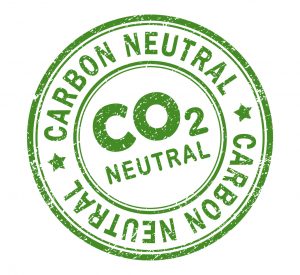Due diligence and compliance challenges require flexible approaches and creative solutions. In “Practical Tips for Managing Environmental Issues During the Coronavirus Pandemic,” colleagues Sheila McCafferty Harvey and Reza Zarghamee discuss how proactive and creative compliance strategies, and effective strategies to document parties’ efforts to comply with existing obligations, can help hedge against transactional and compliance risks.
Articles Posted in Environmental
Wyoming Governor Signs Law Allowing Retiring Fossil Plants to Be Replaced with Small Modular Nuclear Reactors
On March 13, 2020, Wyoming Governor Mark Gordon signed House Bill 74 (HB 74) into law. After the Governor signed HB 74, it became House Enrolled Act 60. HEA 60 allows utilities and other power plant owners to replace retiring coal and natural gas electric generation plants with small modular nuclear reactors (SMRs).
No Sales or Use Tax Due on Materials and Equipment Used to Construct and Install Steam Facility at Tennessee Manufacturing Plant
In a letter ruling published March 16, 2020, the Tennessee Department of Revenue concluded that a contractor’s purchase of materials and equipment for use in the construction and installation of a new steam production facility at a federally owned manufacturing plant was exempt from Tennessee sales and use tax. Tenn. Letter Rul. No. 20-02 (issued Feb. 10, 2020).
COVID-19’s Effects on California Executive Power and Industrial Facilities
California Governor Gavin Newsom has declared a state of emergency and, pursuant to his broad authority under the California Emergency Services Act and other statutory provisions, has issued Executive Orders suspending or modifying the effect of certain state statutes and regulation in response to COVID-19, and authorizing the commandeering of property needed for the response. In “California Executive Power and Industrial Facilities in the Wake of COVID-19,” colleagues Michael S. McDonough and Christopher W. Smith provide an overview of the recent updates and rulings on California’s facilities and operations.
A Decision to Keep an Eye On in South Carolina
On March 6, 2019, the South Carolina Administrative Law Court entered an order in Colonial Pipeline Co. v. South Carolina Department of Revenue, No. 18-ALJ-17-0443-CC, in which it held that a pipeline company’s assets may qualify for a property tax exemption for pollution control equipment of industrial plants under S.C. Code Ann. § 12-37-220(8). In his latest post on SeeSALT, Zachary T. Atkins examines this decision more closely.
Appalachian Trail Pipeline Case Argued before the Supreme Court
 On February 24, 2020, the Supreme Court heard the oral arguments in the case of U.S. Forest Service, et al. v. Cowpasture River Preservation Association, et al.
On February 24, 2020, the Supreme Court heard the oral arguments in the case of U.S. Forest Service, et al. v. Cowpasture River Preservation Association, et al.
On December 13, 2018, the U.S. Court of Appeals for the Fourth Circuit held that the Forest Service was not authorized by the Mineral Leasing Act to grant a pipeline right-of-way under the Appalachian Trail to the Atlantic Coast Pipeline involving a small stretch of the Appalachian Scenic Trail.
Oil Rigs, Reefs and the UKCS
There are more than 11,000 wells, nearly 600 platforms and 24,000 km of pipeline network on the UK Continental Shelf (UKCS). It is estimated that by 2025 more than 220 oil and gas production fields and their structures will be decommissioned. In his recent opinion piece, “Turning oil rigs into reefs: A missed opportunity,” colleague Chris Harrison discusses why the Gulf of Mexico’s “rigs to reefs” approach has not been adopted in the UKCS.
Los Angeles Continues Its Push to Find Carbon-Neutral Ground
 Carbon-reduction initiatives have begun to increasingly target the construction industry, particularly in light of data showing that buildings generate up to 40% of global annual greenhouse gas emissions. While the Federal Green New Deal remains stalled in Congress and states have been slow to spring into action, a number of cities have moved forward with climate proposals that include a shift toward carbon-free buildings.
Carbon-reduction initiatives have begun to increasingly target the construction industry, particularly in light of data showing that buildings generate up to 40% of global annual greenhouse gas emissions. While the Federal Green New Deal remains stalled in Congress and states have been slow to spring into action, a number of cities have moved forward with climate proposals that include a shift toward carbon-free buildings.
A Court-Side Seat: February in the Federal Appellate Courts
It’s been an active month in terms of recent environmental and administrative law cases decided by the federal appellate courts.
Highlights of the CLEAN Future Act Proposal from the House Energy and Commerce Committee
 The Chairman of the House Energy and Commerce Committee has released a “discussion draft” of the committee’s climate bill. The legislation is over 600 pages long, but the Committee has also released a summary of this legislation, which is entitled the Climate Leadership and Environmental Action for our Nation’s Future Act or the CLEAN Future Act. Here are some highlights.
The Chairman of the House Energy and Commerce Committee has released a “discussion draft” of the committee’s climate bill. The legislation is over 600 pages long, but the Committee has also released a summary of this legislation, which is entitled the Climate Leadership and Environmental Action for our Nation’s Future Act or the CLEAN Future Act. Here are some highlights.
 Gravel2Gavel Construction & Real Estate Law Blog
Gravel2Gavel Construction & Real Estate Law Blog


